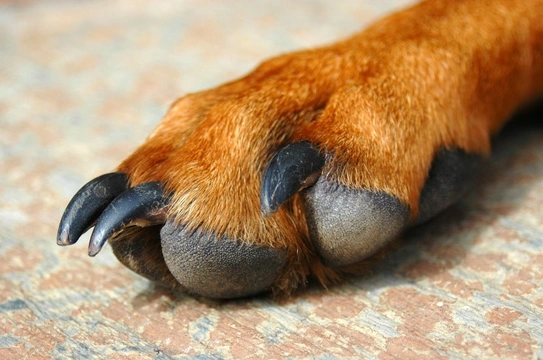
What to do if your dog’s claw bleeds when you trim their nails
Not all dogs need their claws trimmed – dogs that are very active and that walk a lot, particularly on hard surfaces, wear their claws down naturally, which keeps them at an appropriate length. However, if your dog’s nails don’t naturally wear down through activity, they will need trimming from time to time to keep them from growing overly long.
Claws that are too long are apt to catch on things and run the risk of tearing and causing a painful injury, as well as increasing the risk of the dog’s claws growing twisted or curled, which can lead to them pressing into the foot pads (or leg, in the case of dew claws) and causing pain and lameness.
Many dog owners take their dogs along to the vet or a professional dog groomer to get their claws trimmed – but this is also something that can be carried out at home, if you have the appropriate tools and handle the process with care.
Trimming your dog’s nails is not a painful process when all goes to plan, but many dogs find it rather stressful, which can cause them to jerk their leg back or generally make it harder to trim their nails properly. However, if you accidentally nick the nerve-rich quick of your dog’s nails when you trim it, this will be painful for your dog and also, tend to bleed profusely.
A dog that has had a bad experience like this when having their claws trimmed is apt to avoid the process again in the future, which in turn, makes it more difficult to achieve – and if you do manage to nip the quick of your dog’s nails when trimming them, you will have to move quickly to stop the bleeding and calm your dog down.
In this article, we will look at how clipping your dog’s claws can lead to bleeding, and how to deal with this if it does happen. Read on to learn more.
How to avoid nicking the quick
The quick of the claws is the nerve-rich centre, which is filled with blood-rich capillaries that serve the nail. Whilst the hard part of your dog’s nails is insensate, the quick lies close underneath, which means that nicking or damaging the quick will be painful for your dog, as well as causing bleeding.
Additionally, unlike human fingernails, the quick of the dog’s nails grows longer the longer their claws get – so if your dog has very long claws, the quick is likely to be present along much of their length, which means that you can’t simply cut a very long nail down to size in one go.
Trimming the ends of your dog’s claws will cause the quick to recede, which means that in order to return long nails to a normal length, you will have to trim them a little every few days and allow time for the quick to recede each time until they can be trimmed down to the perfect size.
To avoid nicking the quick of your dog’s nails, only trim off a small amount of the nail each session, and try to identify where the quick ends, and leave a safe margin.
This is easier in dogs with white nails as you can often see the quick through the nail – particularly under a bright light or if using a torch – but for dogs with black claws, you will need to take special care.
What to do if your dog’s nail bleeds when you trim it
If your dog’s nail bleeds when you trim it, this means that you have nicked the quick, which will often bleed profusely for a few minutes.
Not only is this painful for your dog, but it is also likely to make a mess in the immediate area or where your dog walks until the bleeding stops, and so if this happens you need to work to stop the bleeding, keep your dog calm, and limit movement.
There are various different types of styptic products – products that stop bleeding – that you can buy to use when trimming your dog’s nails, and it is a good idea to keep at least one nearby for incidents of this type.
These include powders and individual sticks topped with a styptic covering, which can seal the bleeding end of a nicked claw and slow or stop the bleeding.
If you do cut your dog’s quick when cutting their nails, use a styptic to stop the bleeding, whilst speaking calmly to your dog to help them to settle down, and restricting their movement so that you can look at their claw properly as well as minimising mess.
If you don’t have a styptic to hand, other approaches to stopping bleeding include using a bar of soap and gently pressing your dog’s claw into it to seal if off, and using gauze or bandages held to the claw until the bleeding slows.
Once you have successfully stopped the bleeding, it is important to check the nail for any further problems, looking for issues like a jagged tear that may catch on things, dirt in raw the end of the claw, and a large, open sore area of damage.
Whilst a nicked quick will bleed a lot and can be quite frightening, particularly if your dog is flinging their leg around and leaving blood spatters, such an issue is unlikely to cause dangerous blood loss, and will usually stop within a few minutes.
If your dog’s claw is still bleeding after a few minutes and doesn’t show signs of slowing down, or if the sore area of the nail is large or otherwise apt to cause problems, take your dog to the vet and ask them to have a look.



